What happens at ‘First Fix’ and ‘Second Fix’ when building a home?
Date: 20 September 2023
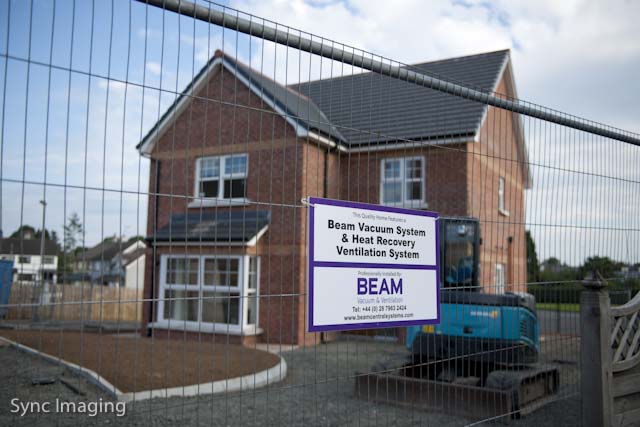
Building your dream home can be a daunting project, with numerous stages involved, some of which can’t take place until certain other work has been completed. In this article, we look at what tasks you may need to complete during the First and Second Fix stages of your self-build project.
What happens during the First Fix when building your home?
First fix during your house build refers to the work carried out after the building has been made watertight, and before plastering internally.
- Your electrician will install the bare-bones of the electrical system, including the installation of
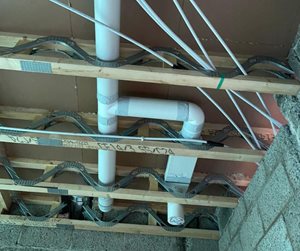 sockets, switches and light fittings – much of this work will not be visible once your house is complete.
sockets, switches and light fittings – much of this work will not be visible once your house is complete.
- Heat Recovery Ventilation ducting is installed. This should be completed before any other services are positioned below the concrete slab (if the house is a timber frame construction, ventilation pipework will need to be in place before partition walls and floors are plasterboarded).
- A plumber will install the pipework for your water supply, wastewater drainage and your heating system. If you have decided to install a BEAM Axco Counterflow Heat Recovery System, the plumber will also need to fit a condensate drain to the unit. (A BEAM NG HERU Rotary Wheel unit doesn’t require a condensate drain).
- Ducting for your Beam Central Vacuum System within the internal walls will need to be installed when stud walls are in place but before any plasterboard goes on.
- Joinery work will take place, including building stud walls, roof struts, door frames and floor joists.
What happens during the Second Fix when building your home?
During the second fix stage of your self-build, much of the finishing work is completed, and takes place after the house is plastered internally. The Second Fix may include the following:
- Your electrician will install face plates on light switches and plug sockets, along with your light fittings. The main fuse board will be connected up allowing all wiring to be tested - all light switches and plug sockets should work and be safe at this stage.
- All plumbed appliances will be connected, tested and commissioned. This includes bathroom sanitaryware, radiators and boilers - the aim being when you turn the water on, it doesn't all end up on the floor!
- Central Vacuum System ducting will be laid in
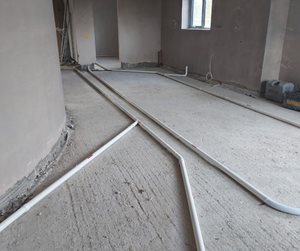 floors when plastering is almost complete and before the floor screed has been poured. If installing underfloor heating, the vacuum ducting needs laid before any underfloor heating pipes are installed. For central vacuum units being installed in a detached garage, a 4” trench duct to carry the vacuum pipe must also be installed at this stage, as well as a 4” service pipe using swept bends to facilitate All Terrain Flexible Ducting (ATFD) from the house to the garage.
floors when plastering is almost complete and before the floor screed has been poured. If installing underfloor heating, the vacuum ducting needs laid before any underfloor heating pipes are installed. For central vacuum units being installed in a detached garage, a 4” trench duct to carry the vacuum pipe must also be installed at this stage, as well as a 4” service pipe using swept bends to facilitate All Terrain Flexible Ducting (ATFD) from the house to the garage.
- Your joiners will do all their finishing touches after the plastering to make your house feel more like a home. This will include fitting your internal doors, skirting boards, architraves and kitchens.
- The rest of your fixtures and fittings will be put in place, including kitchen and bathroom appliances etc.
Once the Second Fix is complete, your Beam Central Vacuum unit can be hung and connected - it is important to do this before any floor tiles are put down. The Heat Recovery Ventilation system can now be installed. A fully qualified BEAM engineer will test the system for airflow rates and system balancing.
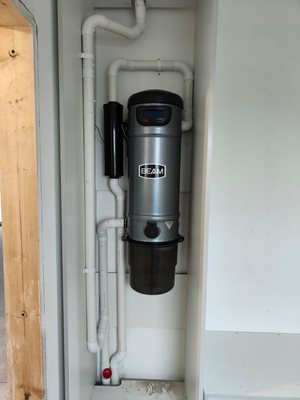
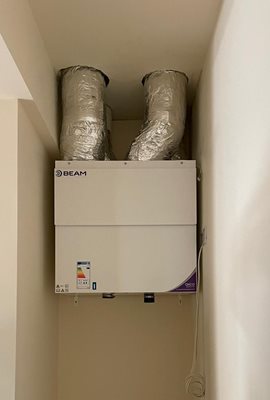
Building your own home is a huge undertaking but very rewarding. It is critical to be aware of the stages of the project and what happens at each. Our blog post 'The Self-Build Schedule’ outlines all the main steps involved in building your own home.
Contact an expert at BEAM for advice on all your central vacuum and mechanical ventilation requirements. Alternatively, you can call our team on +44 (0)28 7963 2424.